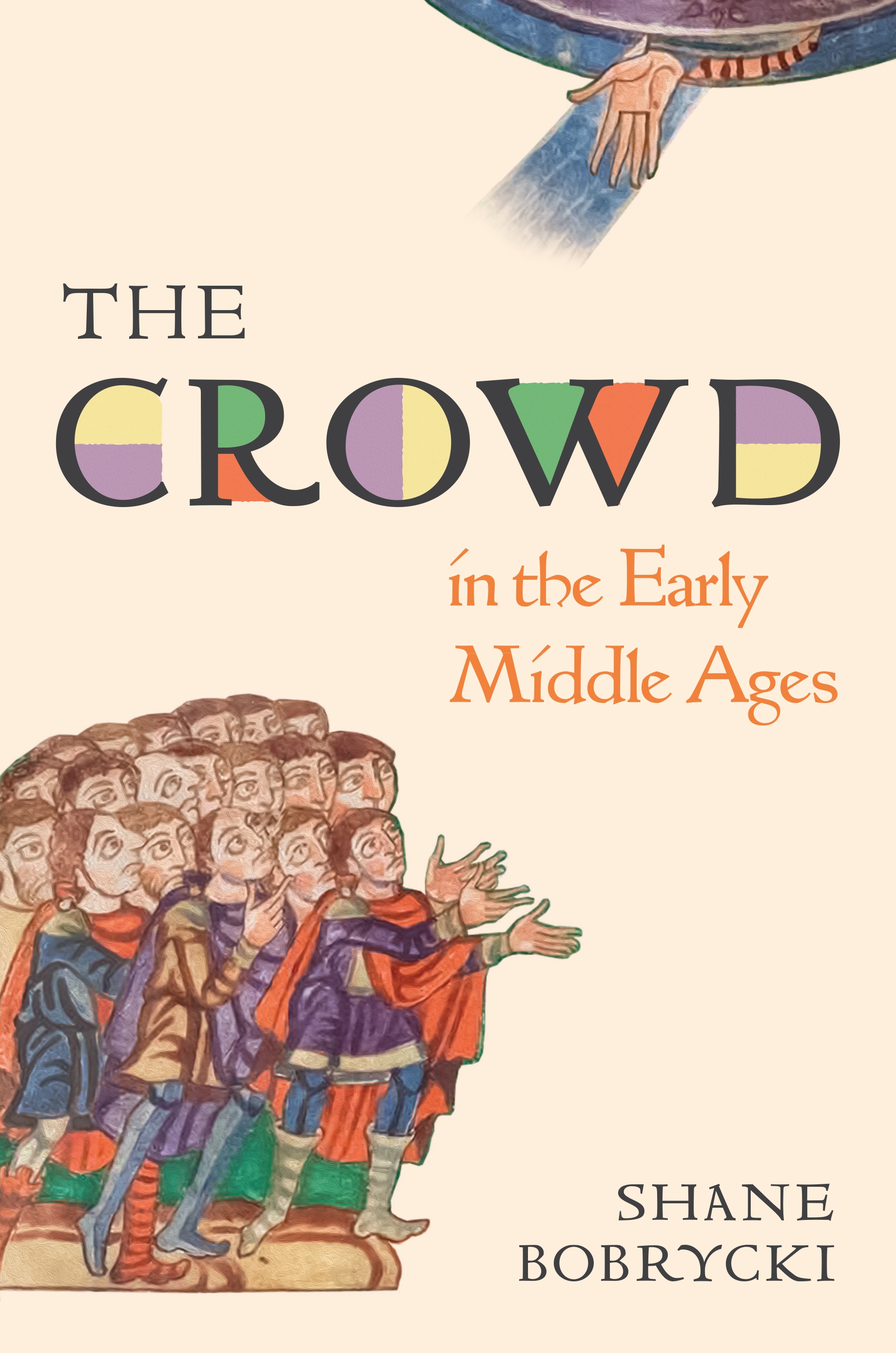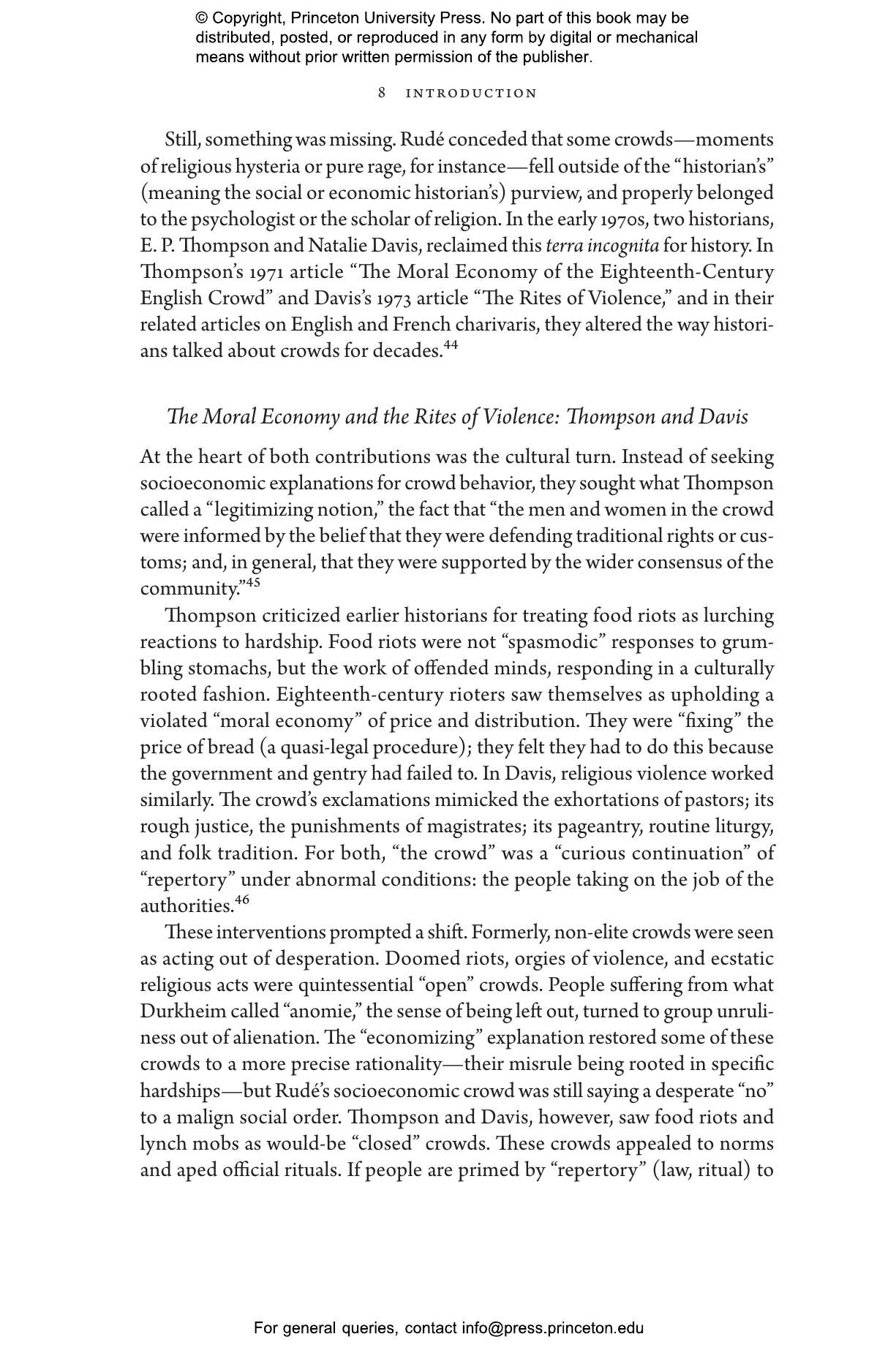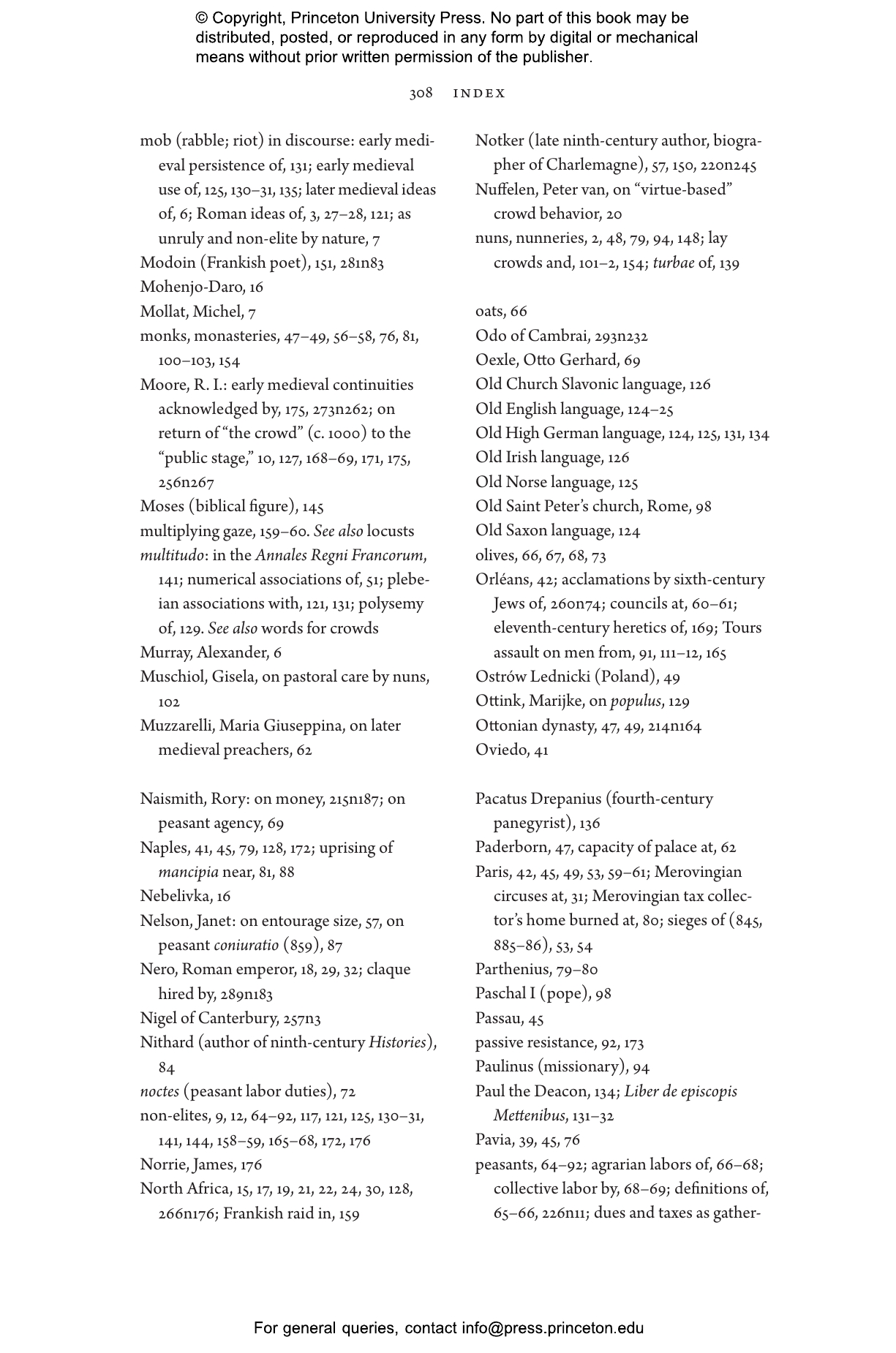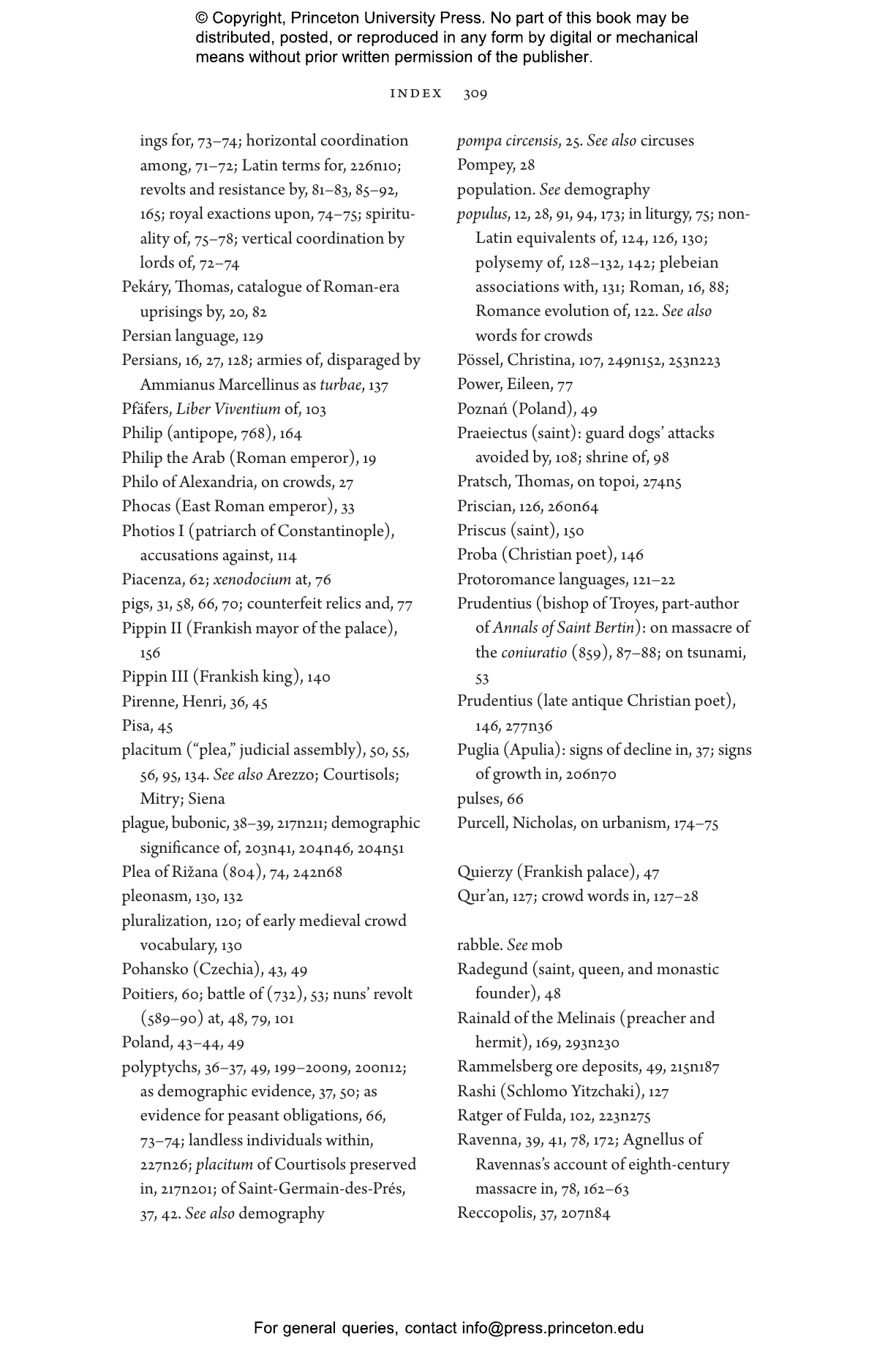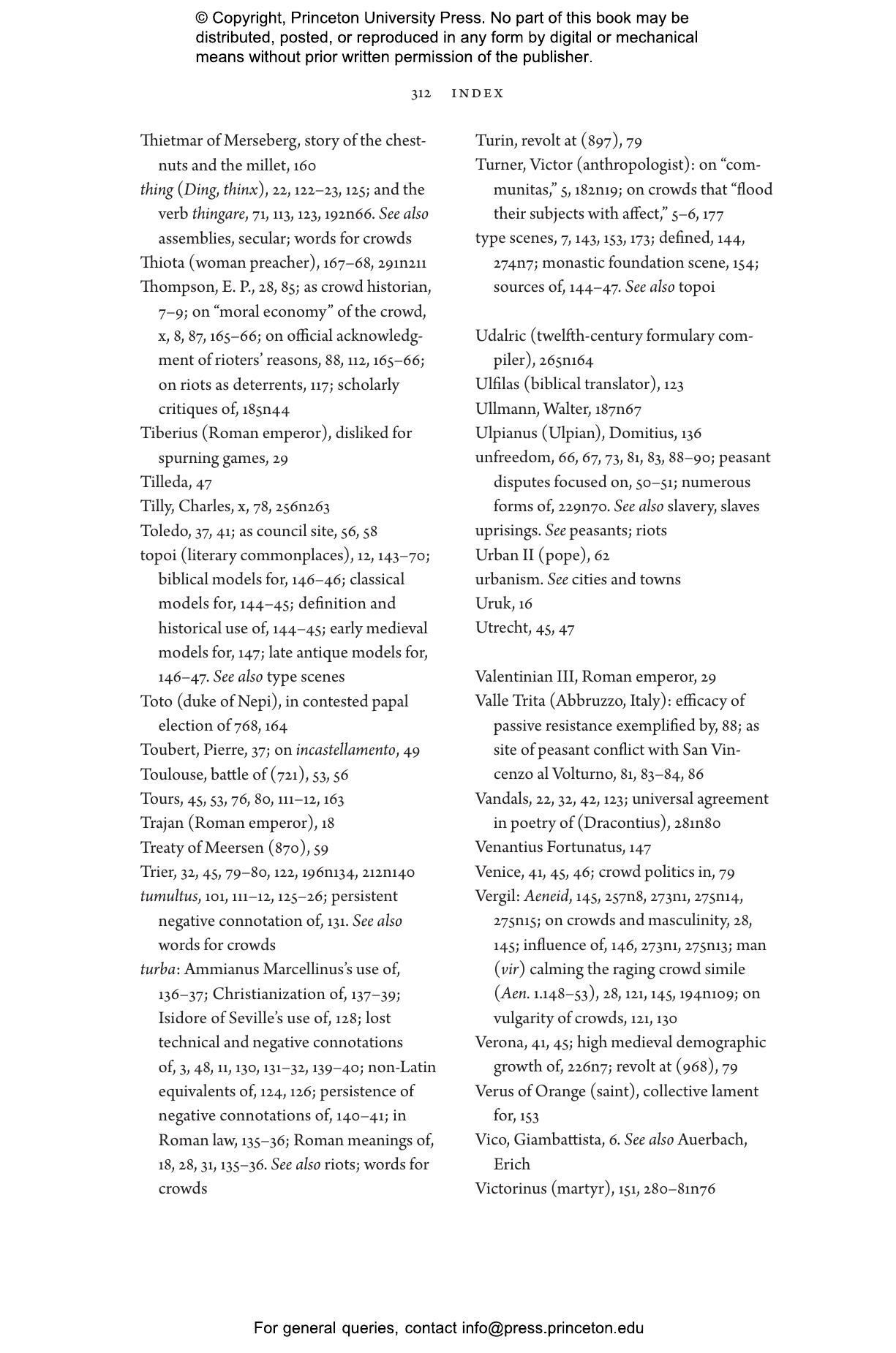By the fifth and sixth centuries, the bread and circuses and triumphal processions of the Roman Empire had given way to a quieter world. And yet, as Shane Bobrycki argues, the influence and importance of the crowd did not disappear in early medieval Europe. In The Crowd in the Early Middle Ages, Bobrycki shows that although demographic change may have dispersed the urban multitudes of Greco-Roman civilization, collective behavior retained its social importance even when crowds were scarce.
Most historians have seen early medieval Europe as a world without crowds. In fact, Bobrycki argues, early medieval European sources are full of crowds—although perhaps not the sort historians have trained themselves to look for. Harvests, markets, festivals, religious rites, and political assemblies were among the gatherings used to regulate resources and demonstrate legitimacy. Indeed, the refusal to assemble and other forms of “slantwise” assembly became a weapon of the powerless. Bobrycki investigates what happened when demographic realities shifted, but culture, religion, and politics remained bound by the past. The history of crowds during the five hundred years between the age of circuses and the age of crusades, Bobrycki shows, tells an important story—one of systemic and scalar change in economic and social life and of reorganization in the world of ideas and norms.
Awards and Recognition
- A New Yorker Best Book We've Read This Year
Shane Bobrycki is assistant professor of history at the University of Iowa.
"Bobrycki has devoted himself to a blessedly old-fashioned kind of scholarship, digging through ever-finer shades of meaning, sifting through all the Latin terms that refer to crowds and mobs and gatherings. If you have long wanted to discern the subtle differences in medieval Europe between vulgus, plebs, turba, populus, and rustici, here at last is the book to assist you. And these differences do indeed have weight and significance."—Adam Gopnik, The New Yorker
“The Crowd in the Early Middle Ages is a delight: compellingly original and brilliantly researched, with lively prose and lucid analysis that reconnect the reader with the joy of learning. Bobrycki ranges widely in revising our understanding of ‘gatherings.’ Theories from multiple disciplines and centuries are tested, along with familiar historiographical approaches, against an impressive array of early medieval sources both textual and material. Bobrycki’s command of demography and philology, in the end, yield a new, deeply humane, perspective on the transition from ancient to medieval Europe.”—Maureen C. Miller, University of California, Berkeley
“This is a fascinating study on a distinct chapter of crowd history in the early Middle Ages. Bobrycki uses a variety of sources to demonstrate how shifts in population scale led to a reinterpretation of ‘the crowd’ after the dissolution of the Western Roman Empire, and how societies in the post-Roman successor states creatively adopted and adapted the meaning and roles of collective agency from the Roman imperial past to a post-imperial Christian present. In doing so, the study explores both key features of early medieval crowd history and how this history set the stage for notions, representations, and functions of collectives (such as parliaments) that would shape Western societies far beyond the medieval period.”—Helmut Reimitz, Princeton University
“Bobrycki asks productive questions about something that has barely been touched on as a subject for the early Middle Ages in Western Europe: how big were crowds? which regions and types of gathering had the biggest ones? and what impact did this have on the possibilities and perceptions of collective action? These are simple questions, but extremely difficult to answer. Bobrycki brings a wonderfully eclectic set of sources to bear on these issues, and in so doing fleshes out the look and feel of gatherings, political and otherwise, their qualitative dimensions as well as their quantitative ones, with brisk style and sparkling intelligence.”—Alice Rio, King’s College London
“This book is excellent: intelligent and attractively written—it leads the reader on and in—and convincing. Bobrycki has turned a tricky subject into a straightforward one. Anyone interested in political interaction in early medieval Latin Europe will have to read it.”—Chris Wickham, author of Framing the Early Middle Ages: Europe and the Mediterranean, 400–800


